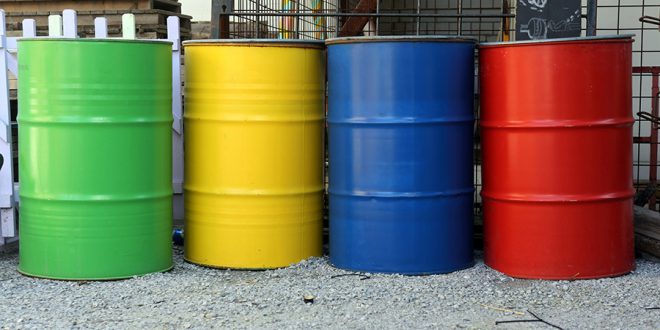Two of this week’s main market highlights were the continued oil prices rally—with Brent touching above $70 a barrel on Thursday for the first time since December 2014—and a sell-off of U.S. Treasury bonds in the middle of the week.
The U.S. government bond sell-off pushed yields on the benchmark 10-year Treasury bonds to a 10-month high at above 2.5 percent. Generally. yields on Treasury notes go up when there’s less demand for them. and go down when demand is high.
While a number of factors have combined to push U.S. government yields higher. analysts suggest that the main reason for this is the oil price rally.
“We would argue that an ongoing rise in oil prices provides an important explanatory factor as regards the rise in long-end yields this week and in recent months.“ a team of Rabobank strategists led by Richard McGuire wrote in a note on Wednesday. as carried by Bloomberg.
The oil price gains have also increased expectations of inflation and rate rises this year. which is the primary cause of the U.S. bond sell-off. according to Rabobank.
The 10-year breakeven inflation rate—a measure of expected inflation in the next 10 years derived from 10-Year Treasury Constant Maturity Securities—moved above 2 percent this week. for the first time since March 2017. Much of that upward move can be attributed to the rising price of oil. Goldman Sachs’ co-Head of Global Macro Markets Research. Francesco Garzarelli. told CNBC this week.
According to Deutsche Bank. the oil price rally has lifted inflation expectations. but the bond sell-off is unlikely to continue unless core consumer prices rise more than expected.
“When oil goes up inflationary expectations go up as well. even if they are long-term inflationary pressures.“ Andres Garcia. CEO at Zoefin.com. told The Street this week. discussing the inflationary pressures.
The Fed now has to figure out whether this is inflationary pressure coming just from oil prices. or whether there are more long-term trends at play such as increased industrial capacity and a tight labor market. Garcia said.
So where will oil prices go now?
“The market is telling potential sellers to back off or risk being stopped out. and such is the current mood that bullish news tends to get more attention than potentially bearish signals.“ Saxo Bank’s Head of Commodity Strategy. Ole Hansen. said in an article on January 10.
While supply disruptions and declining U.S. and global oil inventories have pushed oil prices up in recent weeks and months. the immediate factors that could additionally drive oil prices up are U.S. President Donald Trump’s imminent decision on Iran sanctions. and Venezuela teetering on the brink of collapse. Hansen says.
Now. as Brent toys with $70 and WTI with $64 a barrel. analysts say that there isn’t much room for further gains. barring conflicts and escalation of geopolitical concerns. of course.
“I think it starts to get difficult for us to get much higher from here.“ John Kilduff. founding partner at energy hedge fund Again Capital. told CNBC on Thursday as Brent briefly broke above $70 a barrel before retreating to $69.26. “I think we’re probably in the process of topping out as we speak.“ Kilduff noted.
A growing number of geopolitical wildcards this year—including war. Middle East tensions. North Korea. more sanctions on Iran. and possible oil supply disruptions in Libya. Nigeria. Iraq. and Venezuela—could push oil prices to $80 a barrel. Citigroup said.
Although $70–$80 oil price would greatly help OPEC’s oil-dependent budgets. Goldman Sachs. for example. has warned that the cartel would try to talk oil prices down if Brent tops $70. because of expectations of higher inflationary pressure and U.S. shale surging at those price levels. Since the start of the year. analysts have warned of a looming oil price correction. but at least in the first two weeks of January. bulls beat bears. and geopolitical concerns and declining inventories overrode the bearish concerns of U.S. shale production surging to crash the oil price rally party.
 Iran Energy News Oil, Gas, Petrochemical and Energy Field Specialized Channel
Iran Energy News Oil, Gas, Petrochemical and Energy Field Specialized Channel




